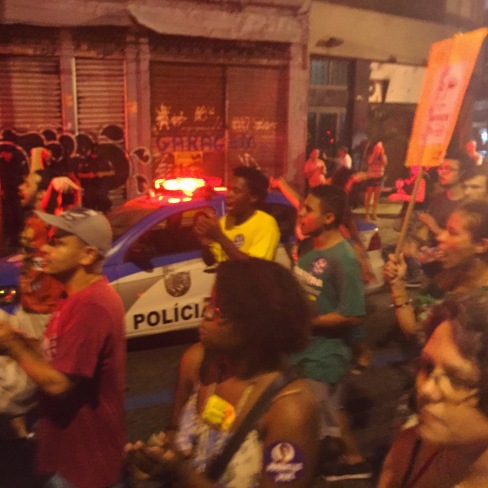Rio de Janeiro is suffering from rising violence, exacerbated by a brutal war between rival narcotics trafficking groups being played out on the streets of informal communities or favelas. Street gangs use sophisticated weaponry, including rocket launchers and automatic rifles. Police and military enter favelas with small armies, leading to deadly prolonged armed confrontations. Violence is intense and state-authority is openly challenged or usurped by organised crime in many communities.
From 2008 until 2011, Rio appeared to have the answer to violence, experiencing a decrease in homicide rates according to most measures. This was attributed by many to the success of the Unidade de Polícia Pacificadora (Police Pacification Unit) programme (UPP).
However, by 2011 violence had returned in many supposedly pacified communities, and from 2016 to 2017, as a new war broke out between two of Brazil’s major trafficking groups, violence dramatically increased across the city. Most poignantly in September 2017, outbreaks of violence were reported in the Santa Marta favela, the community which had been the first recipient of the UPP programme, and along with Rocinha, had been the poster-child of UPP.
In February 2018, Brazil’s president ordered the military to take over the response to violence in the state of Rio, putting it directly in charge of policing. Subsequent security operations in favelas led to an increase in fatal violence, further stirring debate over whether this response worsens or improves security in the city. In March 2018, the assassination of Marielle Franco, a Rio city councillor and staunch critic of the deployments, sparked widespread protests.

My Research
During 2017-2018 I was a Visiting Fellow at the Igarape Institute. During April-July 2018 I conducted an evaluation of a programme run by Fight for Peace (Luta Pela Paz) in Maré. Fieldwork in Rio has been conducted in 2015, 2016, 2017 and 2018, drawing on strong ties with local research organisations and NGOs with vast experience and deep roots in affected communities. Particular focus is given to the Complexo da Maré group of favelas, which are some of the most affected by violence and were subject to 15 months of military occupation, ending in 2015.
Fieldwork in Rio uses a combination of focus groups, one-on-one interviews and surveys to document local views and experiences of violence and responses to it. In depth qualitative interviews with former and current gang-members are also conducted. Perspectives of community and political leaders, police, military and other relevant stakeholders are also considered in order to provide a rounded picture of the drivers of violence and the effectiveness of different interventions.
Header image: Morro da Babilônia favela, Rio de Janeiro, Brazil 5 March, 2016 © Kieran Mitton.